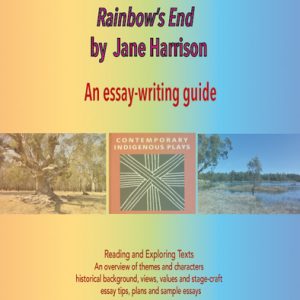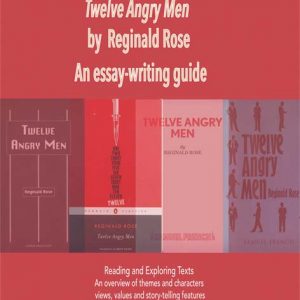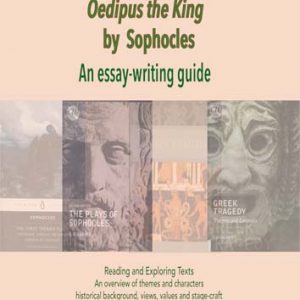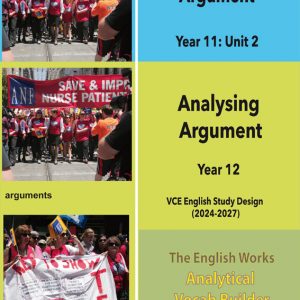Gwen Harwood’s “The Glass Jar”, dedicated to Vivian Smith, charts the young boy’s abrupt journey from innocence to maturity, and from ignorance to (carnal) knowledge.
- Evaluate the references to the sun and the “glass jar” in Stanzas 1, 2, 4 and 7.
- Evaluate the contrasting images: the “secret hate” and fiends, and the devil
- Consider the depictions of the parents and their lovemaking.
- The rhythm: the enjambment, caesuras, assonance, alliteration.
- Consider the extra meanings: the spiritual references: the scarf; monstrance; sun; trident.
- Other extra meanings: the Freudian references to the family triangle; the trinity; the “rival”, the “comforter” and the “child”.
- Unravelling the poet’s non-standard syntax; pay particular attention to the subject/object positioning in various sentences wherein the standard subject-verb-object positioning is frustrated, leading to both front and end-focused subjects/objects. Note, too, the pronoun references; the narrative voice; the references to a “child”; “his”; “he slept; he woke”.
- Note lexical repetition: sun/scarf/violence/heart/sleep.
The image of the glass jar permeates the poem functioning as an extended metaphor; the glass jar is a round container in which the boy hopes he can contain a portion of sunlight. It symbolises hope and permanence. It also represents the boy’s idealistic wish to exert control over his day-light wishes.
The “Glass Jar” consists of eight stanzas, each with six lines. The rhyming pattern in stanzas 1 to 7 is abbacc; the narrative resolves around the boy’s impossible desire to bottle the sun and his witnessing of his parents’ lovemaking; the rhyming pattern changes in the 8th stanza to abacbc, highlighting the poignant and spiritual resolution of the boy’s harrowing encounter with desire.
The image of an all-powerful and protective sun dominates the first stanza. The “reeling sun” of “one summer’s evening” is to be captured in the jar. The stanza is end-focused, that is, the poet delays the (grammatical) object of the child’s endeavours (the object of what he hopes “to keep”) until the final line in the stanza. The emphasis on the object, “this host”, which is synonymously repeated as “this pulse of light” – takes centre stage as the child positions the jar prominently “beside his bed”.
The “jar of light” represents the goodness and childlike possibilities which the boy hopes to preserve; the lightness promises to be a bulwark against the nightmarish demons that take possession of the boy when the “sun’s disciples” are cloaked in “darkness”.
The “light” also has biblical connotations, representing purity and innocence, truth and simplicity.
This protective presence of the sun is further personified by a being who is “wrapped in a scarf” and linked to the spirit of Christ. The second stanza focuses on “his monstrance”, standing tall and also personified. He has a spiritual role, exorcising “monsters” and blessing worshippers with Christ’s love – the symbolic body of Christ. (A “monstrance” is a vessel which carried the eucharistic host in processions – the eucharistic host is the communion bread symbolising Christ’s sacrificial death.)
Further, the bottled sunlight will “light with total power/the holy commonplace of field and flower”. The alliterative phrase, “field and flower” is complemented by the rhyming assonance in the words – “power” and “flower” – to complete the picture of a holy presence “that ringed his bed”.
Another reference in Stanza 4 to “his jar of light” occurs in the context of the boy’s awakening from a nightmare. Note the parallel simple past tense verbs that focus on the boy’s actions. The verbs — “He slept” and “He woke” — establish the contrasting dramatic movement in the poem.
The fourth stanza beginning, “He woke”, presents the son’s waking moments that are connected with his day-time wish – to preserve the sunlight as a protective measure. Immediately, he “recalled his jar of light/ and trembling reached one hand to grope / the mantling scarf away. Then hope/ fell headlong …”. The caesura in the middle of the line emphasises the dismantling of “hope” as the boy tries to “grope” the “scarf away” which then “fell headlong from its eagle height”. The implication is that the jar has been shattered as the boy tries to touch the Eucharistic host – the source of pure love and light. (When priests bless worshippers, they cover their hands with the ends of the veil so that their hands do not touch the “monstrance” as a mark of respect. This is also a symbol that it is Jesus – not the priest – who blesses people in the presence of the Eucharist.) In this case, the boy fails to penetrate and preserve Christ’s true essence – his love and his light – leading to the boy’s naked confrontation with “his most secret hate”.
In the seventh stanza, there is another reference to a “glass jar beside a crumpled scarf”. This time, the personified and “resurrected sun” has returned to mock – “to wink and laugh” – “in a glass jar”. On a literal and obvious level, the sun is mocking the child’s desire to bottle the piece of light. This is an inherently impossible wish. The sun also mocks the boy who tried to shield himself from his demons – from his “secret hate”, from his “thicket of fear” and from the violence of his own “envenomed” nightmare. The mocking and “resurrected” sun is also the triumphant God, the “spirit” that dispels light – but a light that cannot be contained, grasped, handled or touched by a mere mortal.
In contrast to the light-filled imagery of the triumphant and “resurrected” sun, (purity, benevolence and truth) are the images of violence and conflict, monsters and demons, hatred and jealousy – all of which have a basis in the carnal knowledge of his parents’ “sin”.
Expelled from the idyllic Garden of Eden, the boy not only confronts the serpent, but is gripped with the knowledge of his parents’ sinful desire – a desire that excludes him. It is a desire that embroils him in his oedipal lust for his “comforter”, who is suffering the “rival’s fast embrace”. It is this Oedipal desire that envelopes him in evil, darkness and violence.
In Stanzas 3 and 4, the boy confronts his horror; the fiends see “his heart entire” which is “envenomed with his most secret hate”. The “fiends” of violence are described in insidious ways. Using non-standard syntax, this sentence lacks a subject – rather it refers back to the “fiends” which are “Pincer and claw, trident and vampire fang, envenomed”. An insect uses pincers to attack others – often venom or acid can be injected through the pincer into an enemy during a pincer strike – which is also reinforced by the past participle “envenomed”.
Note the allusions: the satanic-like imagery – the “trident” is a reference to the Devil’s pitchfork – and the Oedipal references – the Freudian theory that the child has sexual desires for the parent of the opposite sex, and, concomitantly, feelings of rivalry with the parent of the same sex. (Sigmund Freud introduced this concept in his Interpretation of Dreams, 1899).
Note the hatred, which lies in the “thicket of his fear”, and which takes us into the “bedroom” of his “rival” and his “faithless” “comforter”. The two main settings in the poem are the boy’s bedroom (stanzas 1 to 4 and 7 to 8) and the parents’ bedroom which lies in the “dark house”, and on the other side of the “last clearing that he dared not cross” (stanzas 5 to 6). It is the “clearing” that marks a line between innocence and carnal knowledge; between fantasy and frustration.
The enjambment between the fourth and fifth stanzas draws a strong connection between the “clearing” and the “the bedroom where his comforter lay”. Beginning with the front-focused reference to “the bedroom”, the fifth stanza also draws a connection between darkness, the “thicket of his fear”, the site of his “secret hate” and the violence that links father and son in an Oedipal web of desire.
The boy fears the worst and becomes a witness to the “gross violence done to her”; she is complicit, lying with her face turned away, locked in the “fast embrace”; both “love’s proud executants” playing “from a score”. (An “executant” is someone who puts something into effect; but they are also an artist or musician, thus tying up with the image of the musical score and the parents as artists dancing out a “malignant ballet”.
The child’s “sidelong violence” links him to the “rival” and to the “gross violence done to her” – the passive construction “done to her” highlights both the father’s mastery as well as the extent of his “loss”. In stanza 4, the rhyming assonance of “loss” and “cross” reinforces the child’s loss the moment he crosses the line – the “clearing”. In this case, the child’s “heart” renders him both a victim and a villain; “fiends” see into his “heart entire” (stanza 3) which encases his “secret hate” (in contrast to the bottled and benign sunlight). However, emerging from his “deep” nightmare in stanza 8, “harrow heart’s prison” turns the child into an unwitting victim, imprisoned by his love for his “comforter”. This victim-villain dichotomy not only plays out in the ballet steps but it is also present in the “ring of skeletons” – the son’s death wish as he replaces his “rival”, irretrievably links “his steps with theirs”. It is only as sunlight returns, albeit mocking his desires, and as the light becomes “dispelled”, that the child’s heart “may waken to peace in the paradise of sleep”.
The child’s conflict arises from the fact that this is a love which embroils and envelops him inextricably in a love that also excludes. It is a “score” that he cannot “read” or realise”, or, rather a score he perhaps erroneously reads as “violence”, as both a consequence and a projection of own Oedipal narrative from which he cannot extricate himself. He is sent back, reeling and defeated, “to bed” and to his “worse dreams” and to the “ring of skeletons” joining “his steps with theirs” in the dance of families. The father calls the tune – “held fiddle and bow” and demands complicity in this “malignant ballet”, which he alone controls.
The “mortal comfort” of parent to parent, is the light that is dispelled, turning his own heart into a prison – a lock that he must accept if he is to achieve peace in the “paradise” of sleep.
Thus whilst bathed in “the reeling sun” of childhood the boy is lured and tempted by the “dreams and darkness” of knowledge and sin brought to life in vivid images of monsters with “pincer and claw” and satanic images of vampires It is a dream from which the child awakens – but a dream that has a perpetual hold. It is the hold of parental love which is both a comfort and a punishment – the site of both inclusion and exclusion, of the loss of innocence, but the return of a different type of sunlight.
Note the similarities with the “Barn Owl”, as the child emerges from innocence to confront the knowledge of her capacity to kill. The daughter’s innocence is also shattered, but the father, as “comforter” helps the daughter gain a deeper perspective into her gratuitous act of violence.
Note, too, the devouring nature of the mother’s love in “In the Park”, as well as the devouring nature of the lion’s love, in “The Lion’s Bride”.
See Gwen Harwood’s poetry: analysis of themes, commentaries on poems and model sentences.




